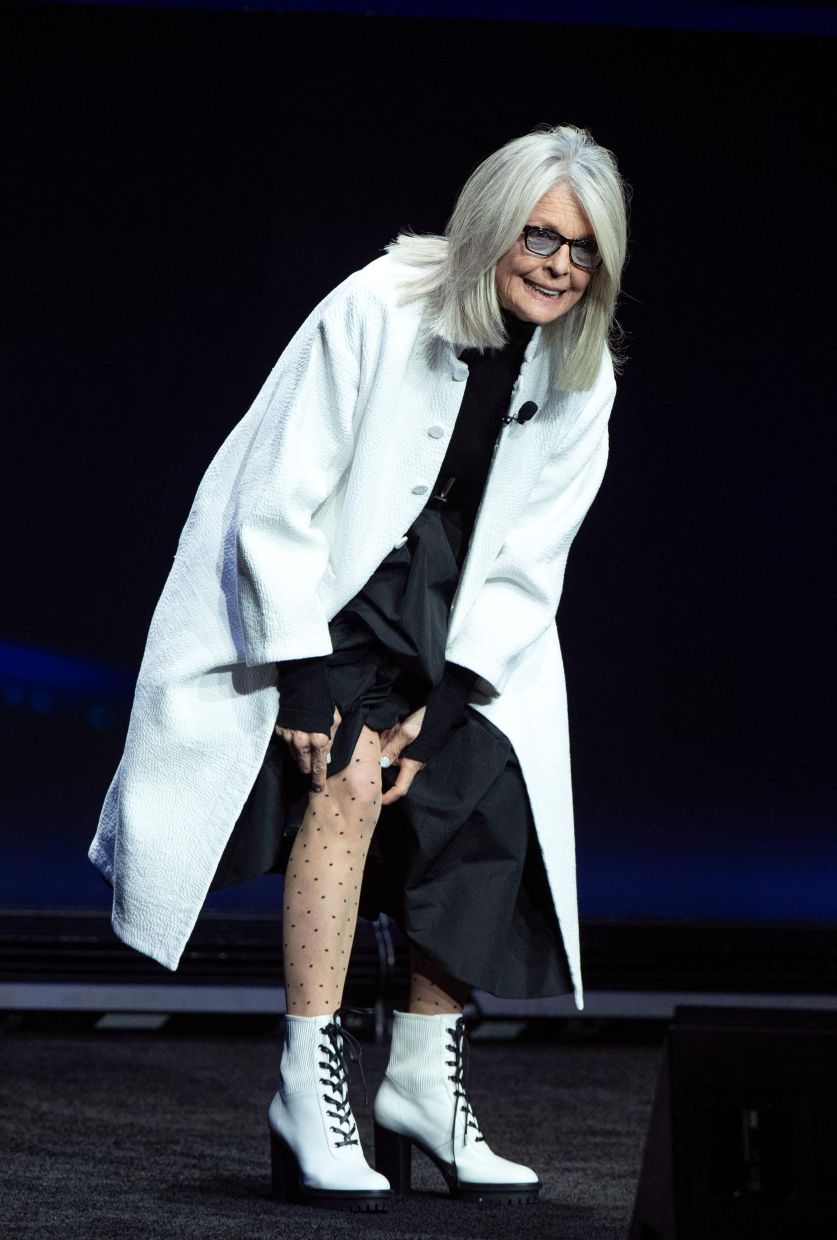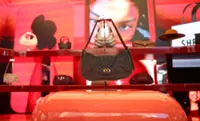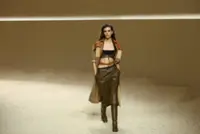Diane Keaton attends the Ralph Lauren Spring/Summer 2024 collection show during New York Fashion Week in 2023. Photo: AP
Diane Keaton, the Oscar-winning actress whose death at 79 was revealed this weekend, was one of the last film stars to arrive in Hollywood before big brands changed the celebrity dressing game.
She never used a stylist, but came with an aesthetic so clearly and compellingly formed that she shaped fashion, rather than allowing fashion to shape her.
As a result, her penchant for men’s suiting, for layers, for turtlenecks and coats as evening wear and accessories – bowler hats, glove, belts, glasses – is as much a part of her legacy as her indelible roles in Annie Hall – the film that first introduced the Keaton aesthetic to the world – and Reds.
And it’s a reminder, in a time when it often seems that film stars have outsourced their own taste and traded away wardrobe decision-making for financial security in the form of brand ambassadorships, that personal style can be its own powerful currency.
Keaton inspired not just her early director (and one-time boyfriend), Woody Allen, who famously asked Keaton to dress herself for Annie Hall, but also designers such as Ralph Lauren, Jenna Lyons and Thom Browne.
It was the impetus for two books from Keaton herself: the 2014 essay collection, Let’s Just Say It Wasn’t Pretty about finding and staying true to your own style, and the 2024 coffee table tome, Diane Keaton: Fashion First.
Read more: Fashion gave Victoria Beckham her second act as a designer, despite early doubts
Lauren wrote the introduction for that one, noting “I am often credited with dressing Diane in her Oscar-winning role as Annie Hall. Not so. Annie’s style was Diane’s style.”
And when it came to that style, he wrote, it was “not defined by the moment".
"It’s not about trends. It’s authentic and forever,” he added.
It was what people now call a “personal brand”, before anyone thought to categorise it that way.
That’s why decades after Annie Hall, Keaton also became a muse for director Nancy Meyers, the avatar of the “coastal grandma” look, and as recently as last year created an eyewear collaboration with Look Optic.
The Keaton aesthetic (let’s call it that) was sourced, at least in the beginning, from Goodwill stores, where her photographer mother used to take Keaton shopping (a lot of Keaton’s costumes in Annie Hall came from her Goodwill wardrobe), and was rooted in the sort of physical insecurity almost anyone could understand.
Keaton wanted to be Raquel Welch, she wrote in Fashion First, but when that clearly wasn’t happening – wrong body, wrong hair, she zeroed in on Cary Grant as a role model and took his dressing axioms to heart.
“I had no doubt I could be the person I wanted to be if I applied Cary Grant’s concept that ‘clothes make the man’,” Keaton wrote in her book of essays.
“Or, in my case, ‘clothes make the woman’.”
Hence her affinity for ties, for pleated trousers, the occasional vest – clothes that both put Keaton in the tradition of stars like Marlene Dietrich and Katharine Hepburn who refused to conform to gender or social expectations, and covered up what she viewed as her flaws.
She wore hats, she said, because she didn’t like her hair. Turtlenecks because they hid the neck and framed her face. And so on.
All those layers – even two skirts to the Oscars in 1978, when she won, ironically, gave her freedom because they gave her security.
“You could call a good two-thirds of my wardrobe an impenetrable fortress,” she wrote.
Her approach to red carpet dressing was effectively the rebuttal to today’s naked dressing trend, though it got just as much attention. Another point worth considering.
She never shied away from discussions of fashion, or dismissed the role it played in her life; for her it wasn’t frivolous, it was a deep-rooted part of her identity.
Read more: The jewellery designer behind Julia Roberts’ onscreen glow in 'After The Hunt'
Onscreen and off. It wasn’t just about her characters, it was about her own character.
Which didn’t mean she couldn’t poke fun at herself and her choices. For her, the faux pas were part of the process.
In 2023, she posted a series of photos on Instagram, where she had 2.6 million followers, with the note “Here lies my endless fashion mistakes … May they rest in peace.”
She said she admired Joan Rivers, despite Rivers’ tendency to make her a target for her Fashion Police. She appreciated any women with the courage of her own dressing convictions.
Her goal, Keaton wrote, the whole point of getting dressed, was “finding whatever works for you to get out the door every day”.
She found it, and she encouraged other people to find it too by being her own best example. Accordingly, though she often sat front row at shows during fashion week, it was as inspiration, rather than advertisement.
Her style wasn’t for sale, and that made it priceless. – ©2025 The New York Times Company
This article originally appeared in The New York Times.






